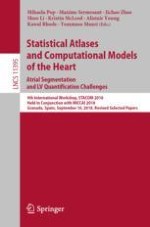2019 | OriginalPaper | Chapter
Left-Ventricle Quantification Using Residual U-Net
Authors : Eric Kerfoot, James Clough, Ilkay Oksuz, Jack Lee, Andrew P. King, Julia A. Schnabel
Published in: Statistical Atlases and Computational Models of the Heart. Atrial Segmentation and LV Quantification Challenges
Publisher: Springer International Publishing
Activate our intelligent search to find suitable subject content or patents.
Select sections of text to find matching patents with Artificial Intelligence. powered by
Select sections of text to find additional relevant content using AI-assisted search. powered by
